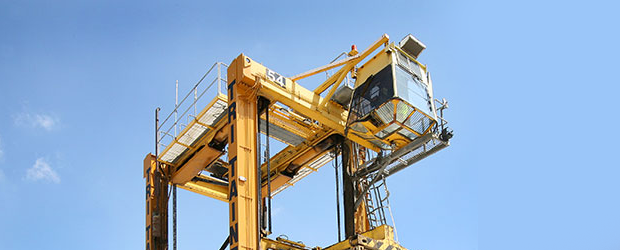
When a logistics company conveys freight around the globe, assigned containers are carrying the culmination of someone's business venture. A product has been manufactured or grown. It's been securely packed and dispatched in the rear of a truck, the deep cargo hold of a ship, or one of the many cars that tie together behind a locomotive. A secure conduit is crucial in this scenario, as important as any safe handling technique. Thankfully, the movement of a truck and the isolation of a ship on the ocean creates instant security. It's only logical that port authorities and storage centres would seek to maintain this freight guardianship obligation, which is why a security factor is an essential part of a land storage strategy.
A 26,000 metre hardstand area packed with refrigerated containers creates narrow avenues and aisles that facilitate straddle carrier operations, but this monumental checker board also threatens our security concerns. The answer to the security burden comes in the form of 24 hour awareness, an obligation to watch every one of these avenues and render blind corners a non-issue thanks to the advent of advanced monitoring equipment. Video surveillance cameras and regular patrols around the facility act as a proven testimonial of the storage firms’ security commitment. Remember, a container park is constructed as the ideal mid-point transit facility, one that often delivers high-end reefer connectivity, but the static factor has to be equally managed by superior guardianship procedures. Why should this role be placed at the feet of the storage park centre? Simply because this intermodal node is as essential as any other point in the logistics conduit, and security is a huge part of logistics when creating a bond of trust between both sides of the transportation paradigm.
The safekeeping of freight on the hardstand is assured on the outside by various protection strategies, methods established by employing the latest sensory devices. These electronic sentinels work alongside human eyes to protect the integrity of each container, but let's not forget that the freight care issue is a twofold problem. We're referring to refrigerated container, reefers, and how the internal environment can be every bit as threatening as some invading stranger. The perishable contents are connected to an extremely reliable power supply, but more safeguards are needed to reinforce this electrical care factor. After all, refrigeration is a complex undertaking. Parts break down or create unpredictable temperature fluctuations. A monitoring strategy thus partners with the outward-focused security policy to ensure the internal climate is properly regulated.
The monitoring of reefer environments is as complex in its own way as any security strategy. Each unit has to be checked for temperature variations, possible trends, the introduction of humidity, and any other factors that could jeopardize the delicate artificial environment being generated within each container. These figures are recorded to be viewed and analysed later. It's a perfectly controlled and balanced equation that rules container parks, a system that pays as much attention to perimeter security as it does the internal environment of monolithic refrigerated containers.
| After Hours: | Danny 0408 488 114 |
Optimized by NetwizardSEO.com.au